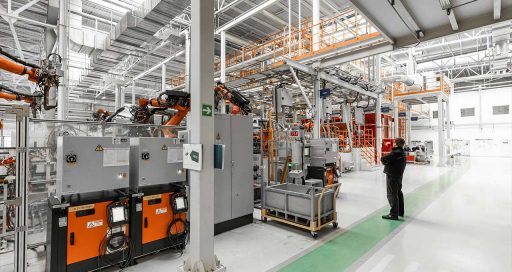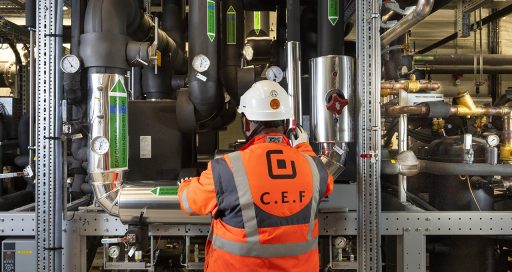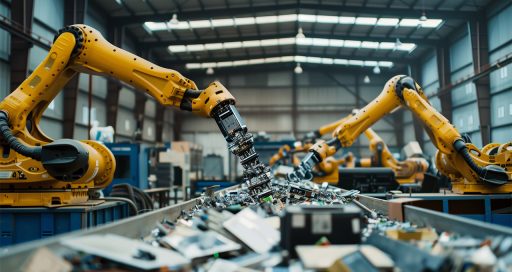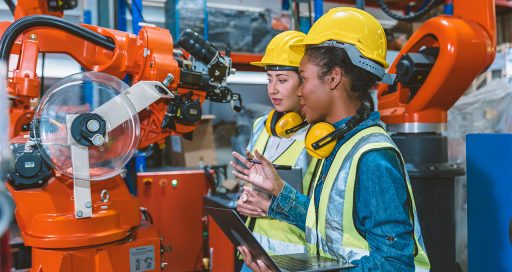Industry is responsible for 20% of greenhouse gas emissions in France and is therefore targeting an 80% reduction in emissions by 2050. To achieve this ambitious decarbonisation target, the sector will need to apply several levers, starting with heat.

At the forefront of decarbonisation, so-called heavy industries, and nine extremely energy-intensive sectors in particular (aluminium, ammonia, steel, chlorine, cement, ethylene, paper/cardboard, sugar and glass), are responsible for two-thirds of France’s industrial emissions. They therefore need to take immediate practical steps to align with the French government targets (see box).
Support is available to manufacturers undertaking this process from firms such as Actemium, the VINCI Energies brand specialised in improving industrial performance. This need for support in on the rise, according to Sylvain Surroca, Decarbonisation Project Manager at Actemium. “Our approach to energy efficiency is a holistic one,” he explains. “It takes the specific features of each industry into account, using audits, energy diagnostics, ‘best practice’, contracting and energy performance monitoring.”
Essential support for manufacturers
Decarbonising industry is primarily a question of identifying and making effective use of solutions such as energy efficiency (which represents 65 TWh of potential savings in heavy industry), waste heat recovery, process electrification, renewable energies, alternative materials and CO2 capture.
In the field of energy efficiency, for example, Actemium provided support to Constellium, a group specialising in aluminium extrusion. Teams from Actemium Angers used the 2022 audit by Actemium Maintenance & Energies Auvergne to identify an initial energy-saving measure: destratification – a process that recovers stratified waste heat, maintaining a uniform temperature throughout a facility and reducing the energy used for heating. This solution set Constellium on course for a 26% reduction in energy consumption.
Waste energy: the number-one lever
Of the various levers for the decarbonisation of industrial production, the recovery of waste heat (indirectly produced thermal energy that is not reclaimed or recovered) is one of the most promising. Essentially, waste heat is often lost or poorly recovered. According to ADEME, “Industry has waste heat potential of 109.5 TWh, equivalent to 36% of its fuel consumption, of which 52.9 TWh is lost at temperatures above 100 °C“.
“Recovering waste energy makes it possible to be more competitive through cost savings.”
It should be noted that heat is the principal potential resource for decarbonisation, ahead of energy efficiency (65 TWh of potential savings in heavy industry), process electrification (42 TWh in replaceable fuels), use of renewable energies, alternative materials and CO2 capture, since it represents over two-thirds of industrial energy consumption.
The solution is therefore to recover this waste energy, but also to create dedicated transport networks to channel and store it for redistribution. There are currently 800 of these heat networks helping to power urban heating in France, such as the largest industrial waste heat recovery network, located in Dunkirk.
For Vincent Deyme, Performance Energy Manager at VINCI Energies, processing waste heat is actually the starting point for the entire energy efficiency approach: “Without optimising usage and matching heat production to actual needs, decarbonisation schemes are futile. This is central to the commissioning process [energy performance quality system] we use to support our customers before looking at solar or geothermal energy production.”
Increasing competitiveness
The benefits for manufacturers are undeniable. In addition to the needed environmental transition, Sylvain Surroca notes that “74% of manufacturers consider implementing a solution for reducing energy consumption to be a lever for improved competitiveness. Recovering waste energy allows them to be more competitive by making cost savings.”
As well as improving a site’s carbon footprint, recovering and using waste heat reduces its energy bills. This can form part of an action plan aimed at meeting the ISO 50001 standard and is one of the objectives of the French government’s Multiannual Energy Plan (MEP).
An ambitious roadmap
The French president outlined an ambitious plan, covering the 50 most-polluting industrial sites as of the end of 2022, to accelerate and schedule decarbonisation in industry: to achieve carbon neutrality by 2050; to reduce greenhouse gas emissions by 55% by 2030; to prepare the disruptive decarbonisation technologies of the future; to ensure the emergence of competitive French solutions for decarbonising industry; to develop large-scale schemes to demonstrate the feasibility of decarbonising industrial zones; and to improve the training available to meet the challenges of industrial decarbonisation.
Other levers for decarbonisation
Levers other than waste heat are also essential to accelerating industrial decarbonisation. For example, electrification makes it possible to eliminate engines and furnaces running on fossil fuels and to replace them with electrical components. According to ADEME, process electrification potentially affects at least 42 TWh of replaceable fuels. As Vincent Deyme, Performance Energy Manager at Building Solutions, points out: “A 100% electrical system is advantageous to industry, because it allows greater control over production and energy costs thanks to self-consumption.” Biomass and thermal solar are currently little used but also offer interesting prospects.
France Chimie, along with ADEME, the Directorate-General for Enterprise, and several industrial federations, recently launched a study aimed at identifying new heat production solutions. Waste, especially in the form of refuse-derived fuel (RDF) and biomass, is emerging as the primary source of low-carbon energy.
Biogas produced and consumed directly on site could also provide part of the energy supply for industrial sites that have access to waste suitable for methanisation. Low-carbon hydrogen is also a robust alternative. Lastly, the relatively new process of carbon capture and storage makes it possible to trap CO2 emitted from industrial processes and store it in deep geological formations.
10/19/2023





